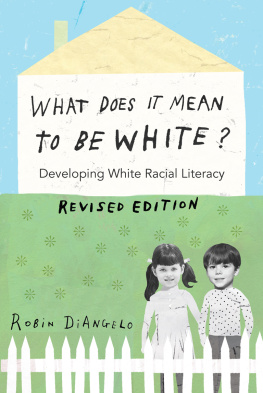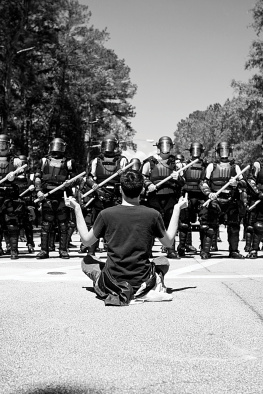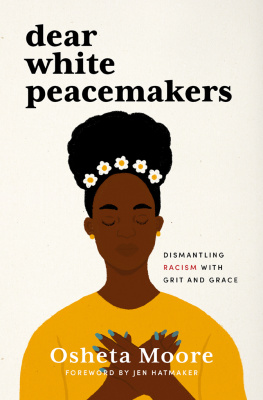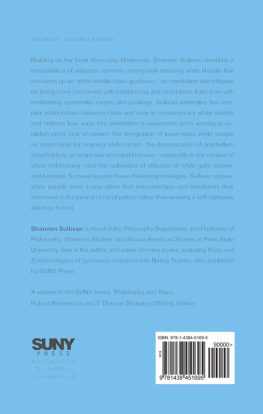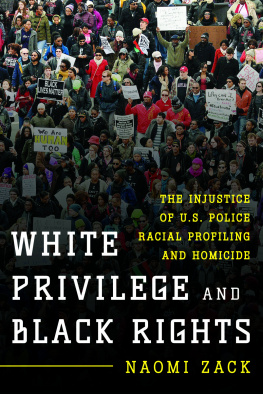INTRODUCTION AND COMPILATION
COPYRIGHT 2015 BY STYLUS
PUBLISHING, LLC
Individual chapter copyright by contributing authors.
Published by Stylus Publishing, LLC
22883 Quicksilver Drive
Sterling, Virginia 20166-2102
All rights reserved. No part of this book may be reprinted or reproduced in any form or by any electronic, mechanical, or other means, now known or hereafter invented, including photocopying, recording, and information storage and retrieval, without permission in writing from the publisher.
Library of Congress Cataloging-in-Publication Data
The CIP data for this text has been applied for.
13-digit ISBN: 978-1-62036-207-5 (cloth)
13-digit ISBN: 978-1-62036-208-2 (paperback)
13-digit ISBN: 978-1-62036-209-9 (library networkable e-edition)
13-digit ISBN: 978-1-62036-210-5 (consumer e-edition)
Printed in the United States of America
All first editions printed on acid-free paper that meets the American National Standards Institute Z39-48 Standard.
Bulk Purchases
Quantity discounts are available for use in workshops and for staff development.
Call 1-800-232-0223
First Edition, 2015
10 9 8 7 6 5 4 3 2 1
To my family E3, Jax, and Laura. Eddie Moore Jr.
To my daughters. Marguerite Penick-Parks
To Tina and Sami. Ali Michael
And to all the everyday White people seeking ways to make change. May this book be a resource and an inspiration on your journey.
___________________
It is one thing to be a racial justice activist bent on reshaping an unjust world. It is something else altogether to be a racial justice activist who fights racism even as its aggressions and oppressions are bearing down upon her or him. In other words, when it comes to the experience of racial injustice and its impact on individuals or communities, my expertise is purely theoretical, which is a kind way of saying Im relatively clueless. On the other hand, on subjects like White entitlement and bigotry, I am well groomed. When it comes to deflecting responsibility and exerting White supremacy implicitly or to participating actively and unapologetically in a hyperracist corporate-consumer capitalism even as I pretend to despise it, my family, teachers, coaches, and others equipped me with an impressive spectrum of expertise and skills.
In a recent essay, I briefly described the troublingly incremental process that led me to reach the still incomplete understanding I now have of structural racism and my role in it:
Learning about racism, for me, has been a continual process of the same basic routine. Just when I think I have somewhat of a grasp of what racism is, some new bit of consciousness comes along and whacks me right in the hind end, reminding me that I dont know squat. Like many White people, my introduction to conversations about racism started with the assumption that it was purely interpersonal. If we can just figure out how different racial groups can get along with one another, everything will be cheery and sweet. Thenwhack!oh, its institutional, its bigger than individual relationships. I started to wrap my mind around that, and thenwhack!oh, its global, its connected to a history of imperialism.... [Then] recently, a couple of experiences conspired to give me the latest whack, and it flattened me.... Every day I participate in pervasive systems of oppression, not just through microaggressing or reaping the benefits of White privilege as they normally are understood, but by consuming mindlessly in ways that exploit already disenfranchised communities. (Gorski, 2013, p. 2)
I believe that many White people see me as an expert on racial justice and White hegemony, despite all my tripping and foot dragging, because of the creative ways Im able to share the understandings I picked upalmost all of them from people of coloralong that journey. What I find more notable and instructive than the distance I have traveled is the amount of time I spent at each stop before I allowed myself to be nudged forward a little farther, almost always, again, by a person of color. What stands out even more to me is how I have dodged a sense of urgency; how it took me 40 years, for example, to recognizenot to understand to any appreciable degree, but just to recognizethat mindlessly participating in a global consumerist-capitalist system that exploits low-income people of color all over the world, which is something I do every day in a million ways, makes me just as complicit with structural racism as I have been at every other step along my path.
Perhaps there is something to be learned by White readers from the transitions in my story, from how I moved from one level of consciousness to another, from the bits of understanding that somehow survived all the waves of denial and cognitive dissonance. In fact, the chapters in this book are full of inspirational and lesson-rich stories about the expanding awareness of White social justice advocates and activists who grappled with their socializations and fought cognitively and spiritually against the pervasive temptations and immediate rewards of complying with structural racism. Indeed, as I read my fellow contributors chapters, I was emboldened by their collective reminder of how fleeting the immediate rewards of this compliance can be. I came to learn that the pervasive temptations of racial ignorance and inaction, understood a different way, actually are temptations to desert my truest instincts toward community and humanity in exchange for the mostly material, counterspiritual benefits of White privilege. That is a beautiful, critical lessonone among many to be gleaned from the stories in this book.
Equally critical, although perhaps less beautiful, are the lessons to be learned from the gaps and dodges and leisurely paces I and many of the most recognized White racial justice advocates and activists took as we pieced together our present understandings of and responses to racism. I am reminded of a compelling but rarely acknowledged lesson I learned from my good friend Peggy McIntosh (1989)one of the people I respect most in this world for her humility and convictionthrough her famous knapsack article: that she came to think about what she called White privilege only through her work examining sexism and male privilege. She spent many, many years working on the latter before her come-to-consciousness moment about her own whiteness and role in racism. It came to her, it seems, when she was ready for it to come to her. There is nothing particularly unique about this dynamic. There is something unique about Peggy, though, and her willingness to share that lesson with us, in a sense implicating herself as a step toward racial justice. We all, to some extent, tend to home in on the oppressions that target us most voraciously and drag our proverbial feet a little when it comes to the oppressions that benefit us, even if they benefit us in the most spiritually deleterious ways. But the lesson there for me, in addition to



